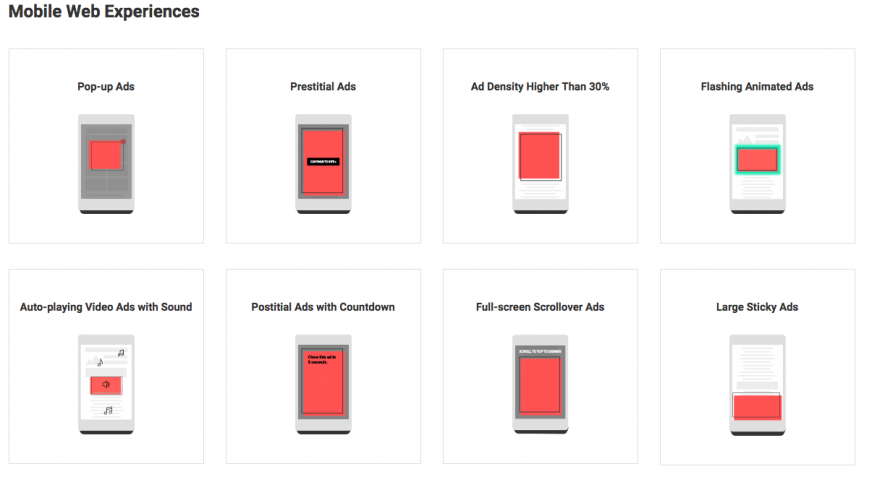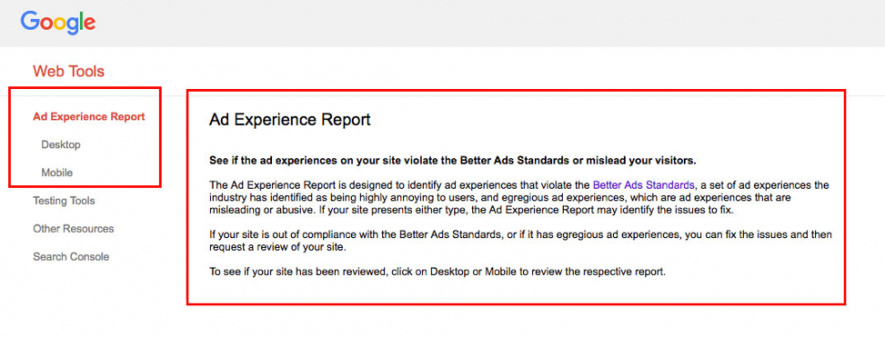Emin Sinanyan Will Your Ads Soon Be Blocked by Google? … Wow-Score collecting now The Wow-Score shows how engaging a blog post is. It is calculated based on the correlation between users’ active reading time, their scrolling speed and the article’s length. Learn more Will Your Ads Soon Be Blocked by Google?
- 6
- 3
- 5
Early next year, Google will shake up the online advertising world with the introduction of its newest version of Chrome. The biggest change to Chrome, which is the world’s most popular web browser, is that it will begin blocking ads on websites that are determined by Google to be overly intrusive or annoying to a user’s online experience. They will do this through the introduction of an ad filter. Recently, Google joined the Coalition for Better Ads, which is a group dedicated to enhancing the ad experience for all parties involved, and as such, they have committed to minimizing the less-desirable ads from the Internet by establishing a more cohesive ad practice by all.
Google’s New Stance on Advertising
The new Chrome browser is designed to be in coordination with the Better Ads Standards as determined and outlined by the Coalition for Better Ads. Sites in violation of a user’s experience will have their ads blocked from viewing on Chrome. Violations might include too many pop-ups, interstitials that cover a screen entirely, or automatically playing sound on advertising videos as the user opens a page.
Whether you pay Google to host the ads or if the ads in question are served by a third party, they will be blocked if they do not meet the guidelines. To avoid these blocks and to prevent the loss of potentially thousands of dollars in ads and revenue, follow the Better Ads Standards on both your mobile and desktop ads. Also, keep in mind this is quite possibly only the beginning in restrictions. Additional possible penalties may follow suit in the future pertaining to SEO and stricter ad guidelines.
The Initial Better Ads Standards
The Initial Better Ads Standards on betterads.org is quite clearly presented in the way ads should appear and methodologies that should be avoided. Google is not the only large organization to join the movement. The coalition consists of several influential companies and organizations ranging from multi-national corporations to news media groups.
The idea behind the coalition is to establish a unified presentation of ads that is beneficial to the advertiser, the service provider, and to the user’s experience. Overall, they are trying to improve ads and the way they are presented. You will find easy-to-follow guidelines for each type of ad and the best way to present each on their website. And, they offer tips and recommendations for both mobile and desktop platforms.
Existing Online Ads Are Annoying
Google and the coalition analyzed the data of existing ad types, along with the feedback of users, and here is what they determined pertaining to levels of online ad annoyances:
- Bottom Large Sticky Ad
- Pop-Up Ad Featuring Countdown
- Pop-Up Ad No Countdown
- Prestitial Ad Featuring Countdown
- Fullscreen Inline Ad
- Prestitial Ad No Countdown
- Takeover Ad
 Image credit: https://www.betterads.org/standards/
Image credit: https://www.betterads.org/standards/
Most Annoying Mobile Ads to Least:
- Pop-Up Ad Featuring Countdown
- Prestitial Ad Featuring Countdown
- Postitial Ad No Countdown
- Static Inline
- Bottom Sticky Ad
- Top Sticky Ad
 Image credit: https://www.betterads.org/standards/
Image credit: https://www.betterads.org/standards/
It has been determined that the more annoyed a user, the greater detriment to an ad campaign and overall sales. This could potentially have severe consequences such as by losing once loyal repeat customers who will choose a competitor with less intrusive and annoying online ads.
These studies are proving that many brands need to quickly re-evaluate their online ad strategies before it is too late. Google believes they are helping the entire online community by banishing such negative ad experiences from viewers’ browsing eyes.
Ad Verification Tool
Do not despair, as Google is providing a tool that will allow you to check your ads against the new standard of better ads practices. Simply access your Web Tools from Google Search Console and click on your relevant website.

Google will showcase the exact status of your ads and any possible restrictions your site may be facing due to violations of the Better Ads Standards. If you do spot an error as listed by Google, they will kindly inform you of the ways you can make changes to turn a violation status into a passing status to ensure your ads are working the way in which you intend.
Why is Google Doing This?
Google has joined the coalition and decided to implement these ad filters and ad blocks for a number of reasons.
The Negative Implications of Bad Ads:
- They slow down the web.
- More challenging to look around browsers and websites.
- Often negatively affects the bounce rate, engagement of users, and overall visitor’s time on a site.
- Adversely affects the intended impact of an advertisement resulting in fewer sales.
The End Goals of Google’s Improved Ads:
- Significantly improve user-experience.
- More positive impact on advertisers’ sales.
- Greater overall revenue for Google.
And, of course, there are the unknown variables and possible ulterior motives by Google that are not being published. Nearly 90 percent of revenue generated by Google comes directly from ad sales. One might infer that these upcoming changes could have far more to do with Google cornering more of the online advertising market share rather than simply doing so for the good of the users and advertisers. However, these steps do have the potential to greatly enhancing the online experience in a variety of ways.
Be sure to follow the guidelines closely to maximize your engagements and conversions and for any new guidelines to be published in the coming months.



